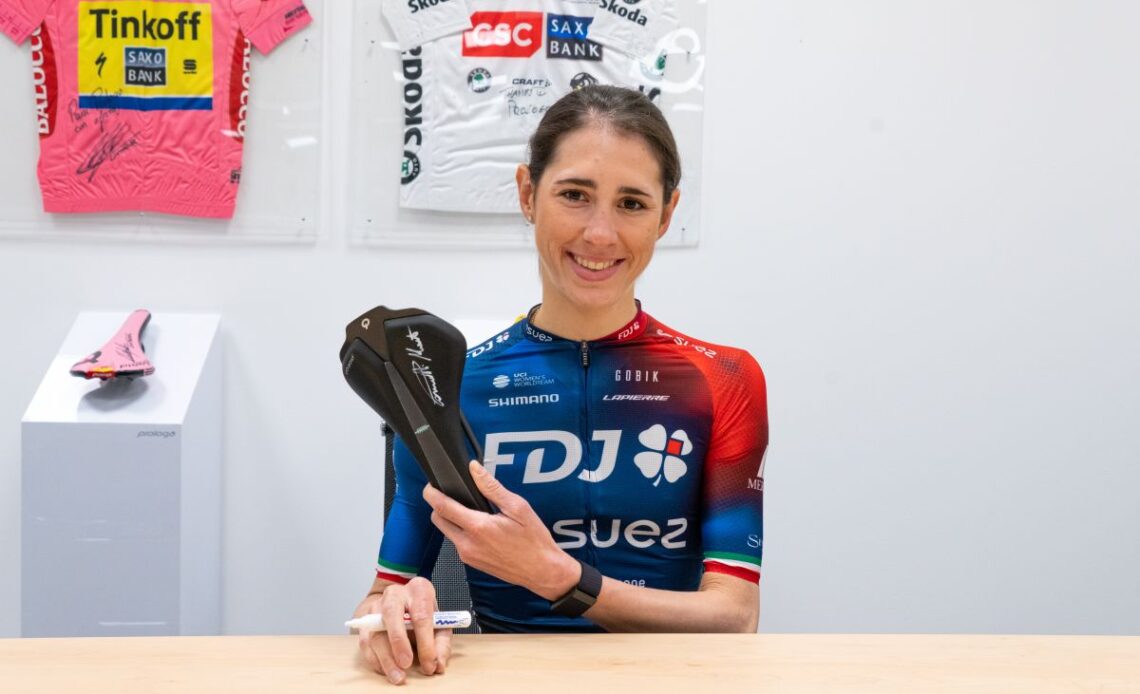Prologo has spent considerable time studying the anatomy of the female cyclist with the help of top UCI WorldTeams and UCI Continental teams, with the goal that every female cyclist could ride like a true champion.
The new saddle is designed to offer an ergonomic option for women that sits alongside the wide range of unisex saddles that Prologo already offers for road, gravel/adventure, cyclocross, marathon and cross country.
Once the initial research had been completed, field testing began in 2021 with the support of FDJ-SUEZ-Futuroscope and the direct involvement of one of the peloton’s most successful riders, Marta Cavalli. Cavalli was involved from the very early prototypes used in training throughout 2021, helping to refine the shape and padding with her teammates until the final design was settled on. The prototypes were used in the biggest races on the calendar, including Cavalli’s biggest victories of Amstel Gold, La Flèche Wallonne, two stages of the Giro d’Italia and 2nd on the general classification.
From the iterations of the prototypes, the Prologo Scratch EVA was born, an ergonomic saddle with its roots in racing and performance. Designed to support the performance of WorldTour champions and the most demanding cyclists in the most demanding conditions.
The design of the Prologo Scratch EVA is similar to the popular short-nosed Scratch M5, used by one of the peloton’s biggest names; Tadej Pogačar. He used this saddle for both of his Tour de France wins, as well as to victory at Il Lombardia, Liege-Bastogne-Leige and Strade Bianche. Among the world’s saddle producers, Prologo has a real racing pedigree, having had some of the greatest riders in history perched on them throughout their careers.
With this as a starting point, the shape of the Scratch EVA has been designed to fit perfectly, with the centre point of the saddle moved forward this allows the seat to be positioned further forward providing more support for the pelvis. The EVA name refers to the padding used, the rear of the saddle uses a thicker, high-density foam to fully support the ischial bones whereas the middle and front use a thinner section utilising lower-density foam to minimise pressure.
The difference in thickness and density of the foam used creates a channel…
Click Here to Read the Full Original Article at CyclingNews RSS Feed…

